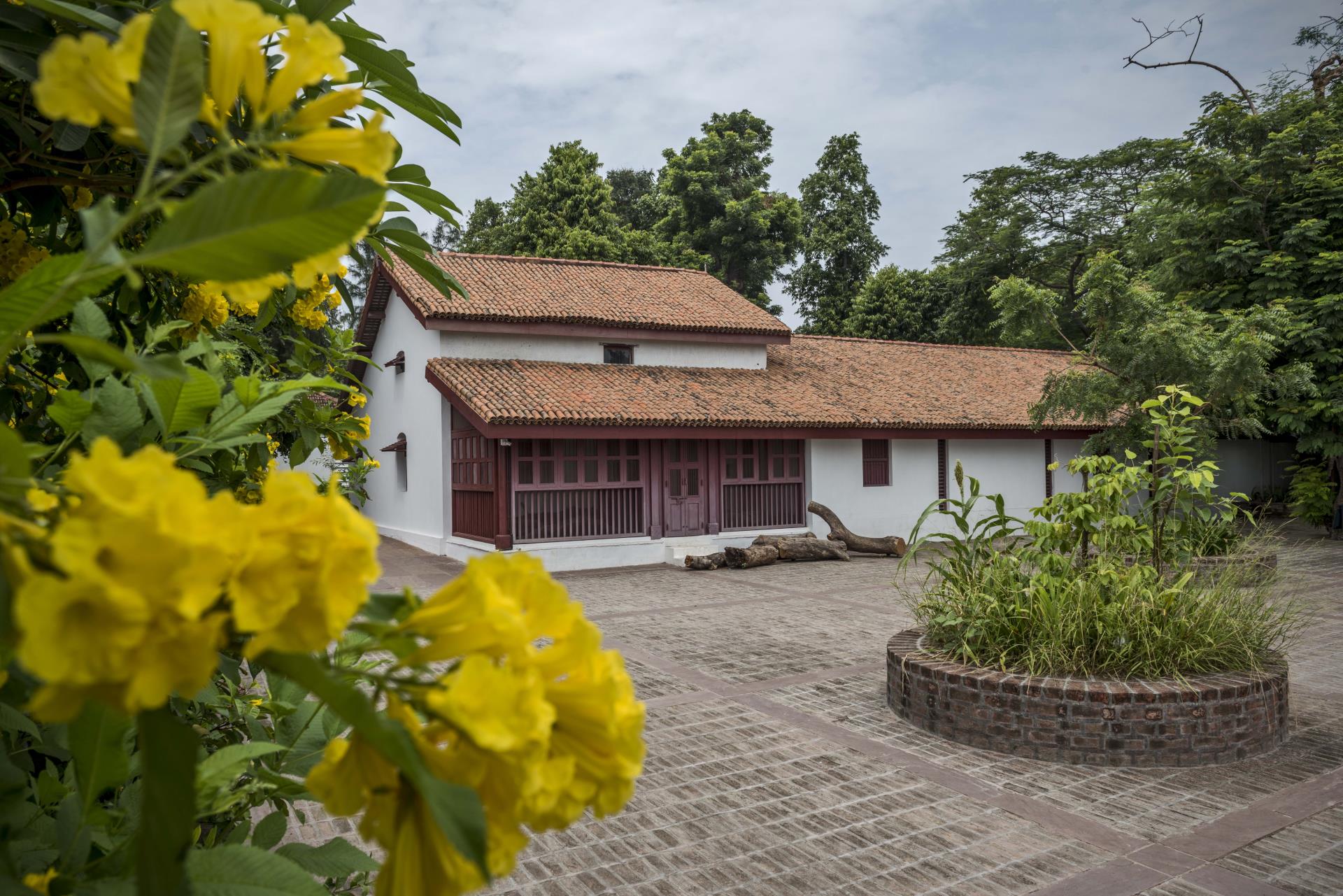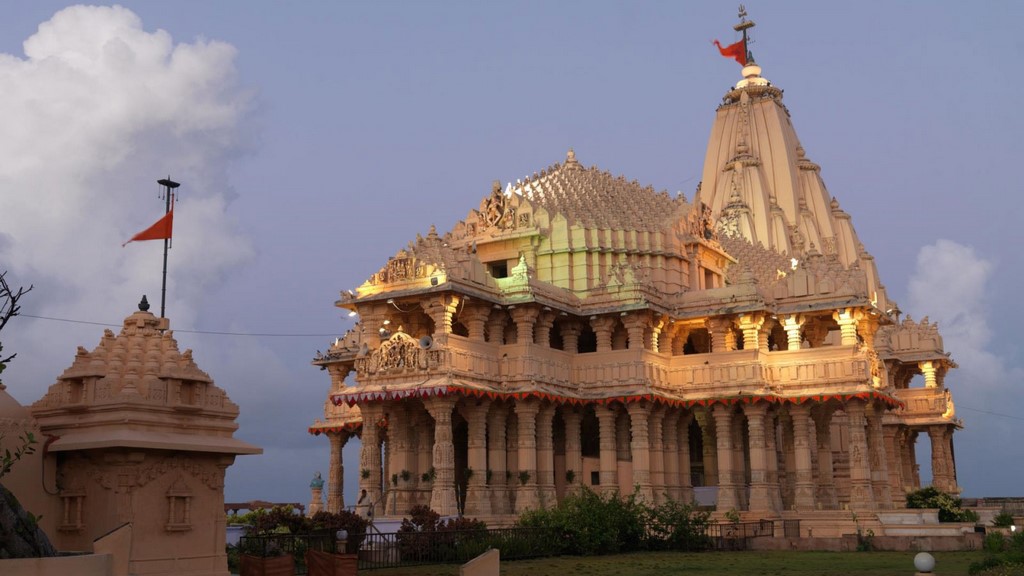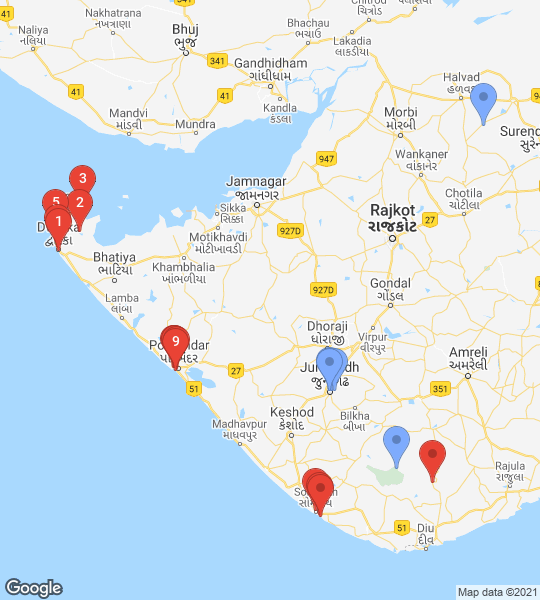
Sorry, we couldn't find anything that matches your search.
Destination

Famous Places to Explore in Hyderabad
A vibrant city with the imposing...

Raipur Tourist Places | Best Place to Visit
The stronghold of several erstwhile...

Ahmedabad
Declared as India's first UNESCO World...
#
Day 1 Stop 1 - Dwarkadhish Temple
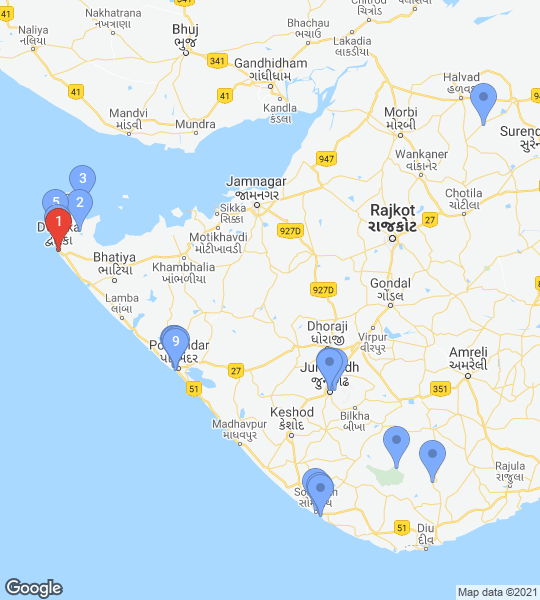
The distance between Dwarka and Ahmedabad is 440 km. Dwarkadhish Temple is also known as Jagat Mandir. Dwarka is one of the Chardhams, four sacred Hindu pilgrimage sites, and is one of the Sapta Puri, the seven most ancient religious cities in the country. Dwarka is often identified with the Dwarka Kingdom, the ancient kingdom of Krishna, and is believed to have been the first capital of Gujarat.
Day 1 Stop 2 - Nageshwar Temple
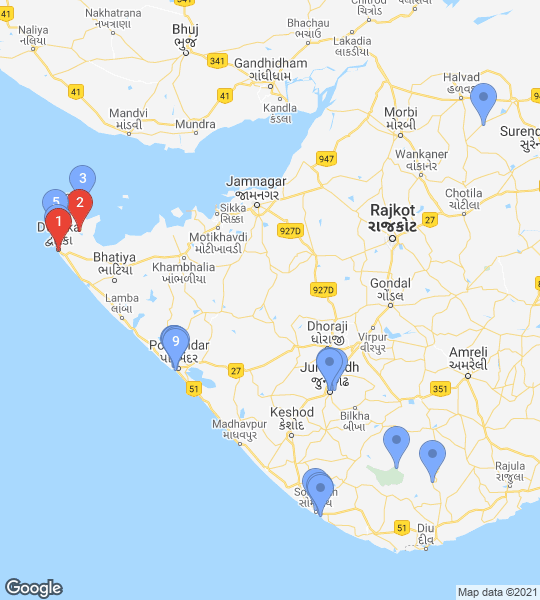
Nageshvara Jyotirlinga Mandir is a temple dedicated to Shiva, and is one of the twelve Jyotirlingas (meaning radiant sign of The Almighty).
Day 1 Stop 3 - Beyt Dwarka
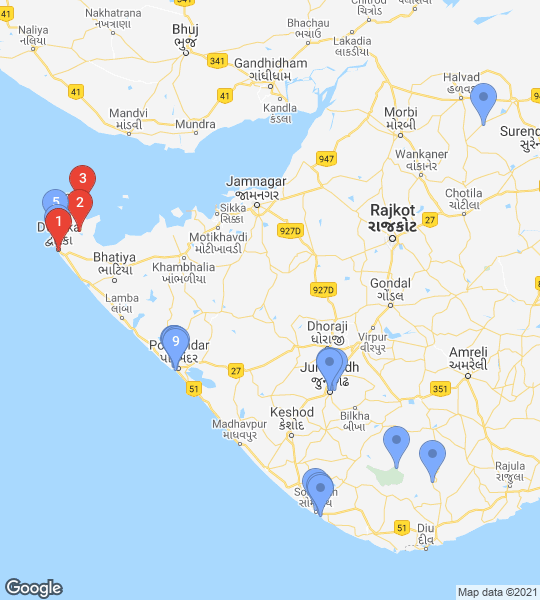
Bet Dwarka is an island in the Arabian Sea, off the coast of Dwarka. Considered the original residence of Krishna, Bet Dwarka was the old port during the ancient times of Krishna before Okha port was developed in Dwarka.
Day 1 Stop 4 - Rukmini Temple
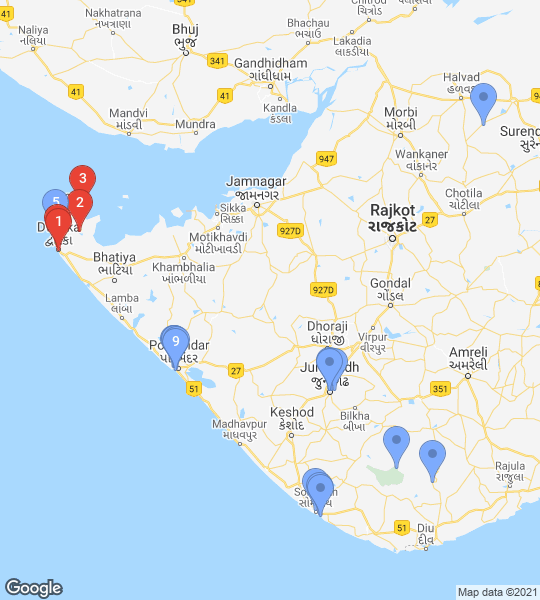
Rukmini was the Chief Queen and the first wife of Lord Krishna and is the avatar of Goddess Laxmi. The temple is believed to have been built in the 12th century.
Day 1 Stop 5 - Shivrajpur Beach
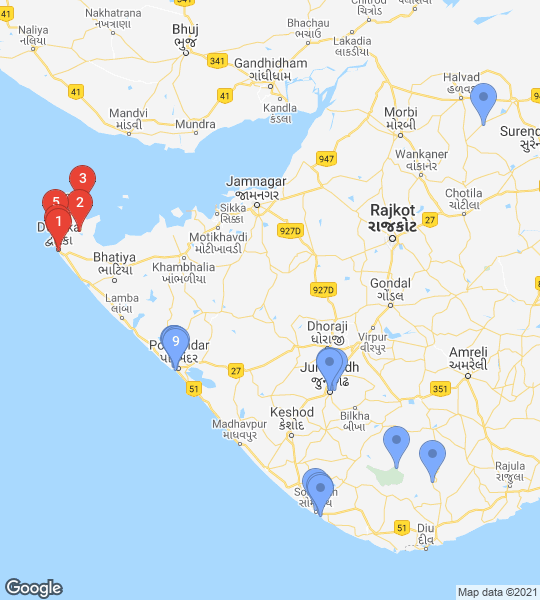
Shivrajpur Beach is also known as one the Blue Beaches in Gujarat. It is an ideal getaway for sightseeing, beach activities, birds watching and marine and coral life.
Day 2 Porbandar Stop 1 - Kirti Mandir
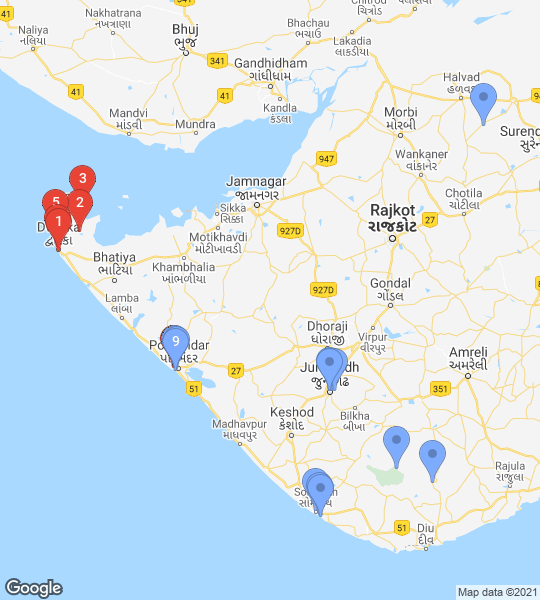
Porbandar is 105 km from Dwarka. Kirti Mandir is the birthplace of Mahatma Gandhi. His heritage house is kept as it is near a museum complex. One can find the real pictures of Mahatma Gandhi and Kasturba along with the items used by Gandhiji at display.
Day 2 Stop 2 - Sudama Temple
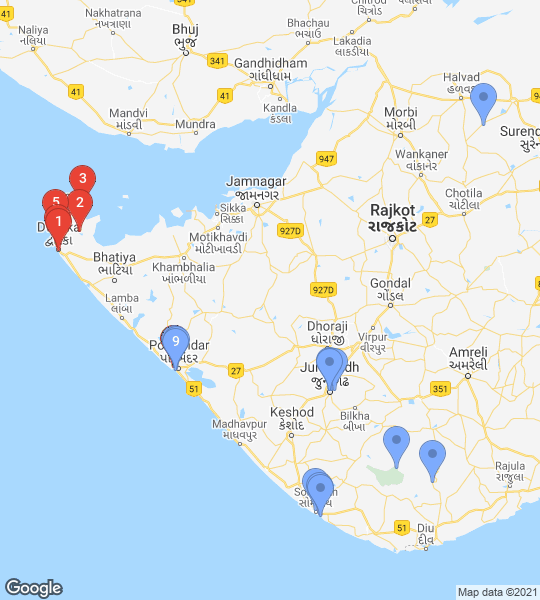
The temple is most renowned as the only sudama temple in world, dedicated to Sudama the poor friend of Lord Krishna.
Day 2 Stop 3 - Porbandar Bird Sanctuary
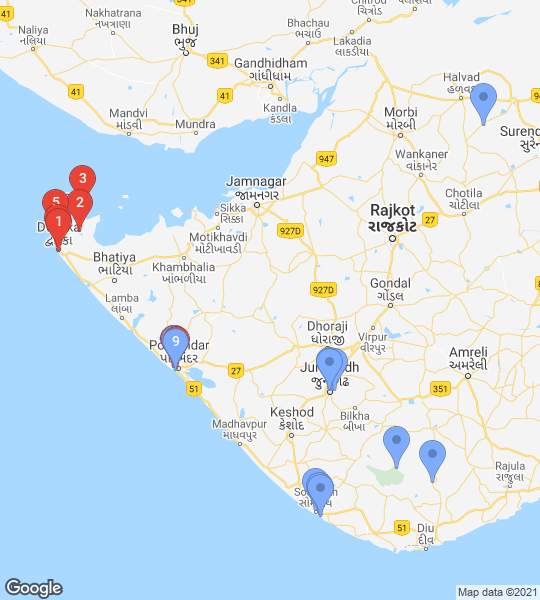
It is the only sanctuary in India, which lies in the heart of the city of Porbandar and is a unique example of co-existence between man and nature. It is the only bird sanctuary of Gujarat that provides legal protection to varied species of birds that nest here. Porbandar Bird Sanctuary is the smallest bird sanctuary spread over an area of 1 square km. The sanctuary has a lake attracting migratory birds and other birds such as teals, fowls, flamingos, ibis and curlews.
Day 2 Stop 4 - Chowpati Beach
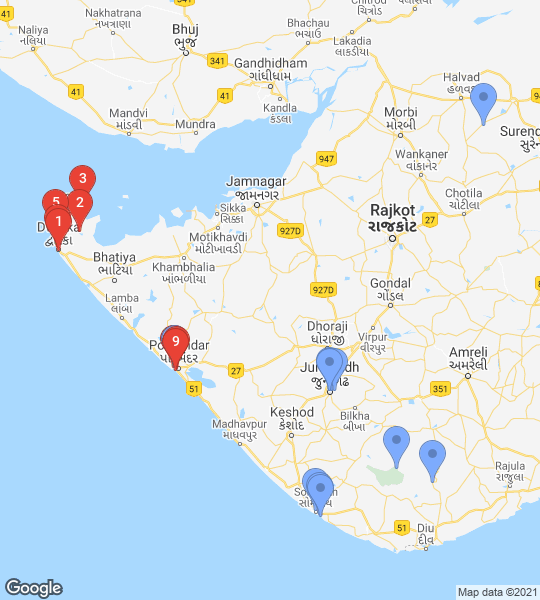
It is a long sand beach, home to many shorebirds, and is bordered by a wide, paved walkway with sea-facing benches.
Day 2 Stop 5 - Tara Mandir
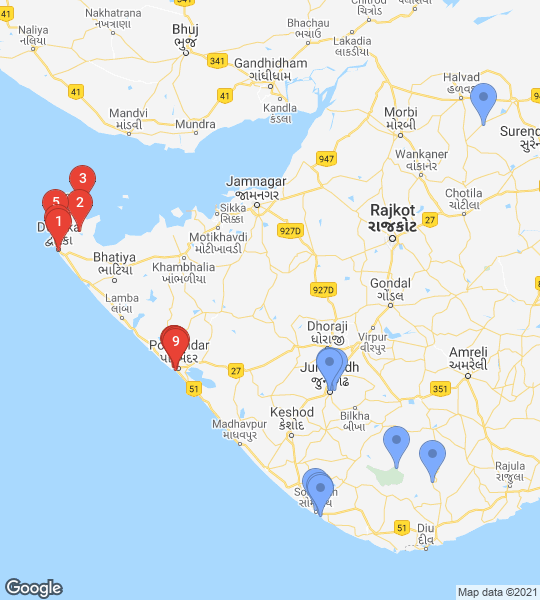
Tara Mandir is a planetarium. This place is one of the main attractions of Porbandar city. It is also known as Pandit Jawaharlal Nehru Planetarium.
Day 3 Somnath Stop 1 - Somnath Temple
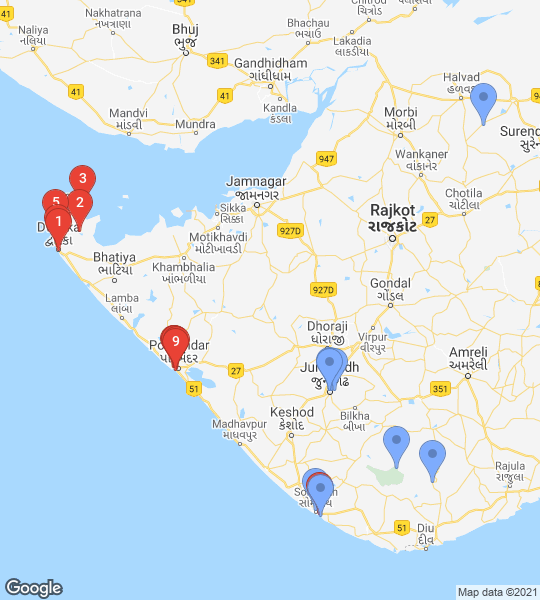
Somnath is 130 km from Porbandar. It is believed to be the first among the twelve jyotirlinga shrines of Shiva. It is an important pilgrimage and tourist spot of Gujarat. Reconstructed several times in the past after repeated destruction by several invaders and rulers, the present temple was reconstructed in the Chaulukya style of Hindu temple architecture and completed in May 1951. The reconstruction was started under the orders of the Home Minister of India, Vallabhbhai Patel, and completed after his death.
Day 3 Stop 2 - Bhalkha Tirth
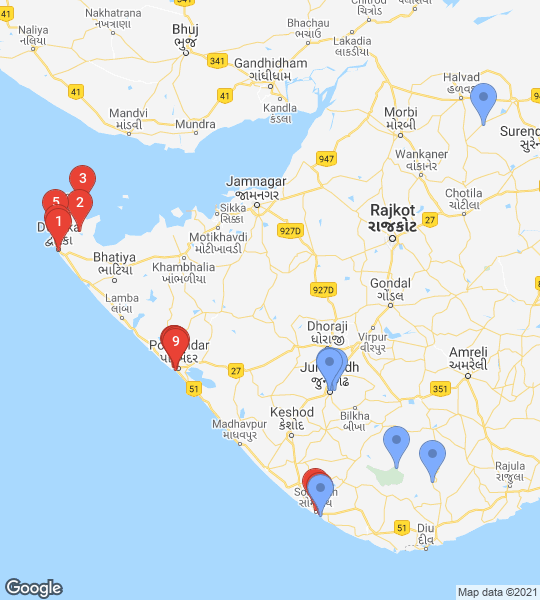
It is the place where Lord Krishna was hit by the arrow shot by a hunter named Jara. After this, it is said, that Lord Krishna left the earth for heavenly abode.
Day 3 Stop 3 - Triveni Sangam
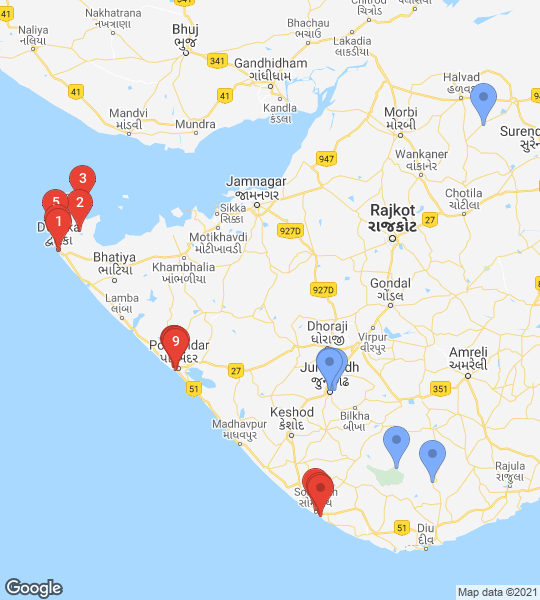
It is the confluence of three rivers: Kapila, Hiran and the mythical Sarasvati River
Day 3 Stop 4 - Tulsishyam
Day 4 Sasin Gir Stop 1 - Gir National Park and Wildlife Sanctuary Safari
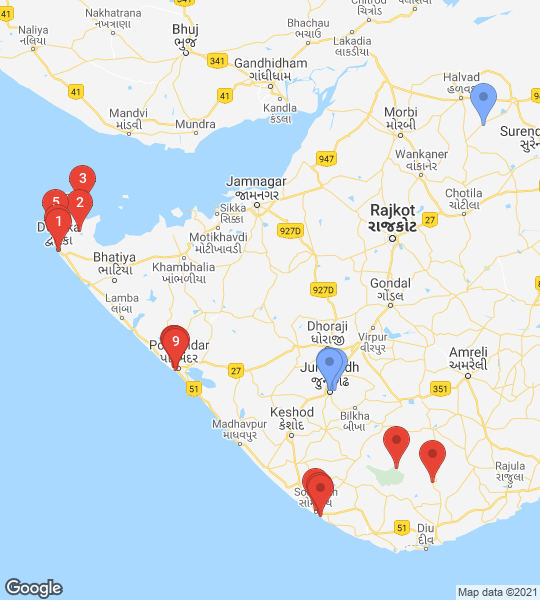
Sasan Gir is 72 km from Somnath. In the 19th century, the rulers of Indian princely states used to invite the British colonists for hunting expeditions. At the end of the 19th century, only about a dozen Asiatic lions were left in India, all of them in the Gir Forest, which was part of the Nawab of Junagarh's private hunting grounds. British viceroys brought the drastic decline of the lion population in Gir to the attention of the Nawab of Junagadh, who established the sanctuary. Today, it is the only area in Asia where Asiatic lions occur and is considered one of the most important protected areas in Asia because of its biodiversity. The Gir ecosystem with its diverse flora and fauna is protected as a result of the efforts of the government forest department, wildlife activists and NGOs. It is now considered the jewel of Gujarat's ecological resources.
Day 4 Stop 2 - Devalia Park
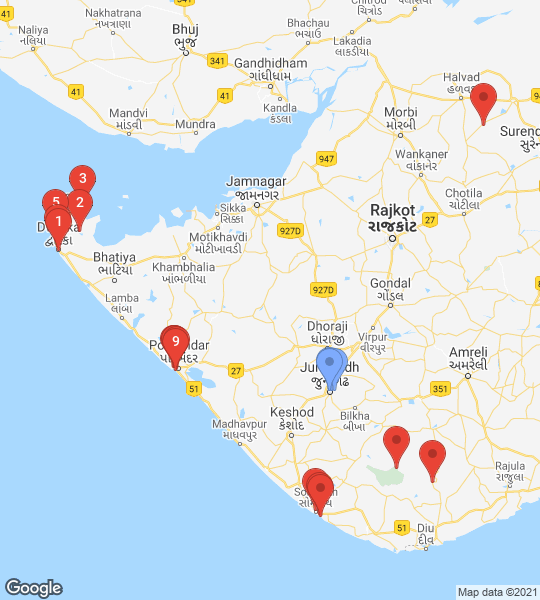
Devaliya National Park also referred to as the ‘Gir Interpretation zone’ is an area carved out as a distinct eco-tourism locale allowing tourists to view lions as well as the other rare wild animals of Gir within a short time span and against cheaper charges. Devaliya, in other words, is a part of Gir National Park and allows the facility of reserving the population of wild animals within an area segregated with Ha Chain linked fences. This attempt has been made by the eco-tourism department to lessen the tourist pressure on Gir as a whole and to increase the chances for tourists to view the wild animals.
Day 5 Junagadh Stop 1 - Mount Girnar Hill Temples
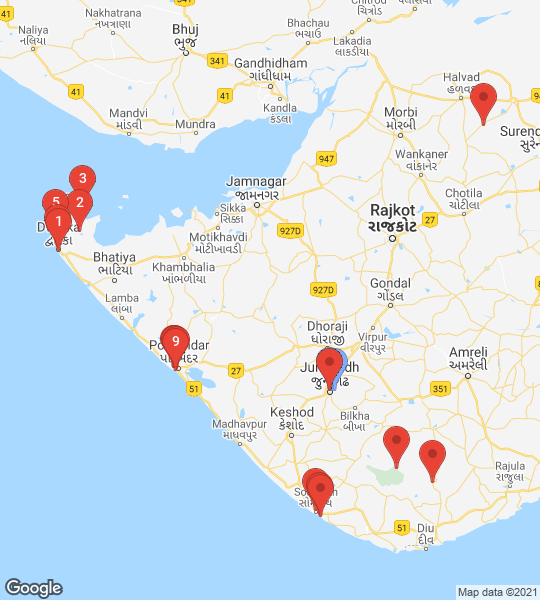
Junagadh is 76 km from Sasan Gir. Girnar is one of the most ancient Hindu and Jain kshetras (sacred hill temples) in India. Lord Dattatreya performed penance at the top of the hill. People climb 10,000 (ten thousand) steps to have Datta paduka darshan. The ropeway service is also available. A group of temples notable to Jainism are alongside. They are sacred to the Digambara and the Svetambara branches of Jainism.
Day 5 Stop 2 - Damodar Kund
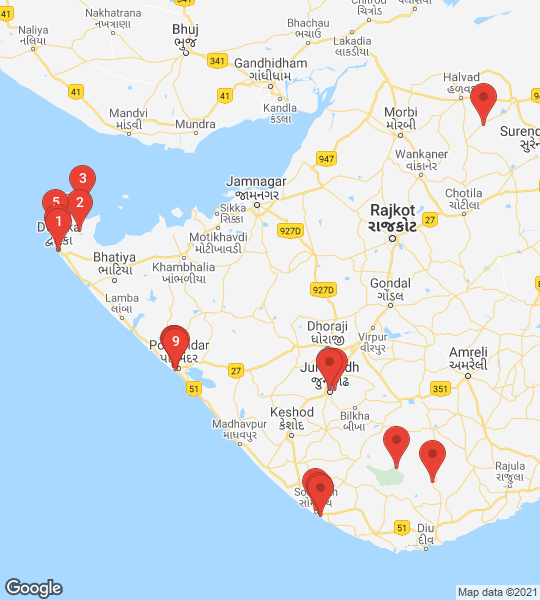
Damodar Kund is one of the sacred lakes as per Hindu beliefs, which is located at the foothills of Girnar hills. It is considered holy, as per Hindu mythology and many Hindus prefer to bathe and immerse the ashes and the bones left after cremation of dead bodies, here at Damodar Kund due to a belief that the departed souls would get moksha here.
Day 5 Stop 3 - Uperkot Fort
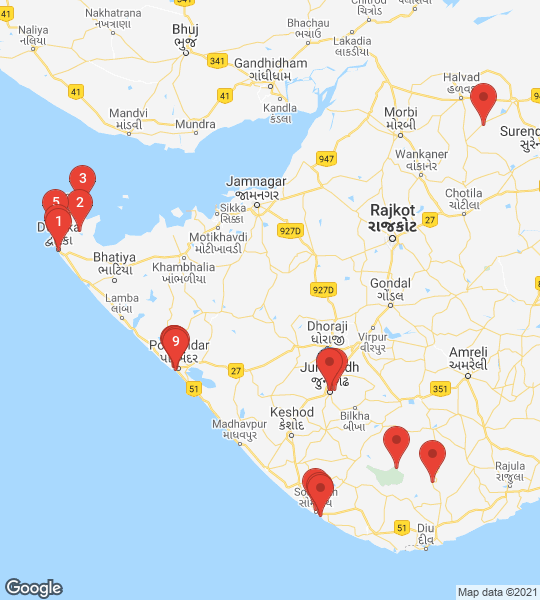
A fort and a town were established at the foothills of Girnar hill during reign of the Maurya Empire and continued to be used during Gupta period. Uperkot Fort is the combination of Buddhist caves, wells, stepwells, kunds, temples, tomb and mosques.
Day 5 Stop 4 - Mahabat Maqbara Palace
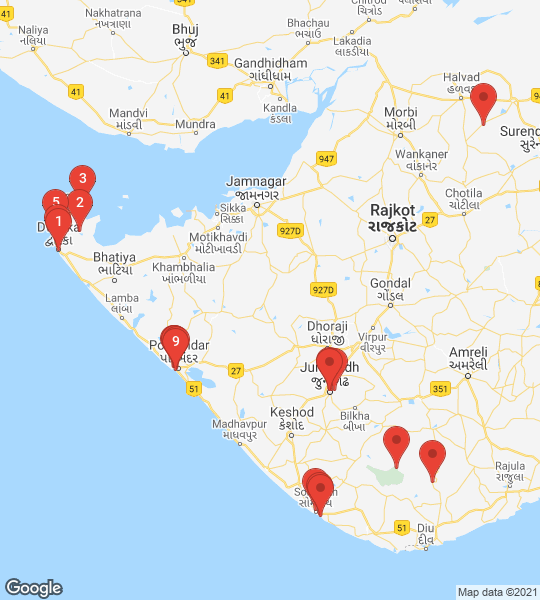
Mahabat Maqbara and Bahauddin Maqbra are mausoleums in Junagadh, Gujarat, India. They were completed in 1892 and 1896, respectively, and are dedicated to Mahabat Khan II, the Nawab of Junagadh state, and his minister Bahauddin Hussain Bhar, respectively. These mausoleums are known for the amalgamation of Indo-Islamic, Gothic and European styles.








